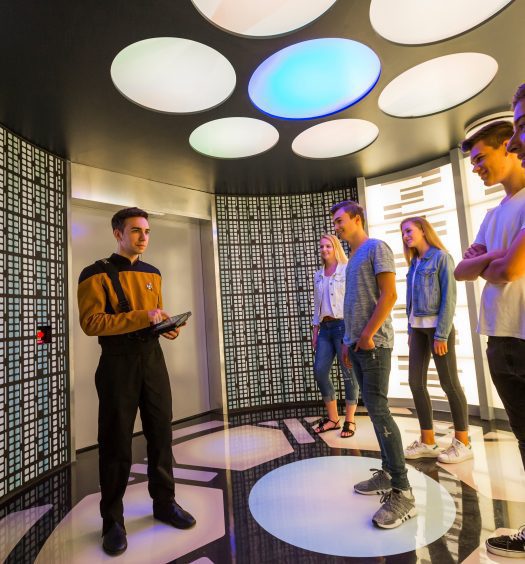IN the last edition of InterPark I wrote about guest expectations. I framed up how to get into the minds of guests and make it easier for frontline teams to think about what guests expect at your attraction.
Now it’s time to move onto the standards of delivering these expectations through guest service. But before we begin, just a note on the word ‘standards.’ It sounds so uninspiring. I’m sure we agree that we need a standard (in other words, a level of quality) for our service, but at the same time these standards need to be set at the appropriate level. I’m sure you’ve used the word ‘standard’ before to describe something as average!
The next thing to ensure is where the level of standard is set – and it’s definitely a conundrum! When it comes to guest service, I’ve always given the advice that any standard of service should not be written in an ‘aspirational’ way. For example, “by 2025 we aim to treat all customers with respect.” The standard of service has to be something that can be achieved every single day, at each and every opportunity. If the standard is too aspirational, it will become very hard to achieve and lead to poor culture if no-one ever hits the mark.
On the other hand, however, one of the things that separates great attractions from good attractions is the delivery of service to a ‘high standard.’ Amazon founder Jeff Bezos has said that “high standards are teachable” and that one can “learn high standards separately in every arena of interest” (i.e. service, sales, marketing, etc.). Bezos identified that achieving high standards involves “recognising what great looks like” and “having realistic expectations for how hard it should be to achieve that result.”
So now we move into creating some high standards for service delivery in your attraction. Once again like everything with guest service, there is never one answer as different marketplaces and attractions deal with different customers. But if I think about 99.9 per cent of the business owners I interact with there are two specific standards that appear more than others.
They are – a high standard of efficiency and a high standard of consistency. Think about those two words and I’m sure you would have heard yourself saying previously that you want team members to serve in an efficient way and do so consistently for your guests.
The problem is that often we lose the meaning of service efficiency – and develop efficient processes. And lose the meaning of service consistency – and develop consistent processes. Now there’s nothing really wrong with efficient and consistent processes, but often these processes are created and unknowingly cancel each other out. That’s right – efficient processes can lead to inconsistent outcomes and consistent processes can lead to inefficient outcomes. Let’s take a look.
McDonalds is probably the most well-known efficient organisation globally that many can think of. Just take a look at their drive-thru. Get your meal in a few minutes without having to leave your car. That’s efficient. But how often do you drive off and find that something is missing, or that the quality of your meal isn’t the same as last time? They’re so efficient, but consistency is compromised.
Let’s look at the reverse example of hotels. At check-in, no matter how you booked your room, the first thing you are asked for is your credit card. Now I understand this the first time, but imagine going back to the same hotel time and time again and you are consistently asked for your credit card. Over time, think how inefficient this must be. The consistent process of asking for a credit card starts to waste guests’ time. Imagine what it would be like if you could arrive at your hotel and immediately be whisked away to your room to relax and take care of the credit card things at a later time?
What I think needs to be done is to keep efficiency and consistency as standards, but reinvent how they are displayed so that they can be seen as high standards by guests and team members alike. So now it’s time to introduce to you what efficiency and consistency should look like.
Efficiency
Speed – how quickly something is done?
Ease – how hard the customer has to work for it?
Accuracy – how often do you get it right?
Reliability – can the guest rely on it time and time again?
If you look at the McDonalds example you can clearly see that speed and ease are number one on their priority list, as accuracy and reliability are often missed. So when looking at efficiency, think of it as being these four levers that have to continuously be adjusted based on the situation or the guest.
Consistency
Consistent – attention to detail – does your team always look for the little things that count?
Consistent – credibility during tough times – are your team members able to deliver exceptional service when things go wrong or during times of conflict?
Consistently doing the same things in different ways. That’s right, not being robotic, giving great service but doing it with heart and making sure the guest can see it.
Consistently serving with care. Ask yourself at every interaction with a customer, is my service coming from kindness?
In the hotel example, if you noticed that the guest has stayed with you previously, thought about how they are feeling after a long journey and wanted them to not feel processed, an efficient check-in without asking for a credit card is something truly memorable. Now there are obviously policies and procedures behind that, but you can start to see how making efficiency and consistency part of service rather than processes, they can be delivered to a high standard.
So consider whether you have efficient processes or efficient service? And whether you have consistent processes or consistent service? You’ll be surprised what you find!
Chris Smoje is a customer service speaker, trainer and facilitator and founder of the DIME™ Customer Service approach. Chris works with organisations and their people to develop a common interest and excitement about delivering exceptional customer service results.
www.dimecustomerservice.com

















